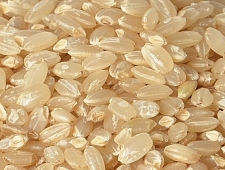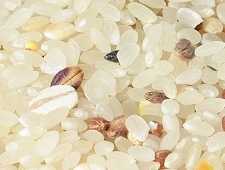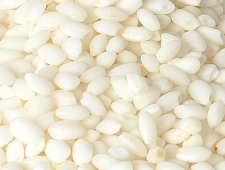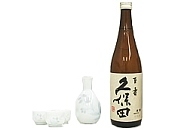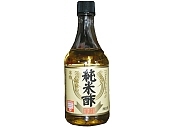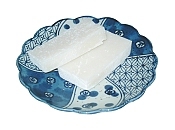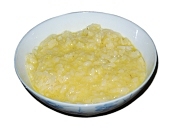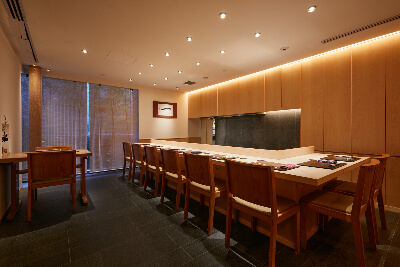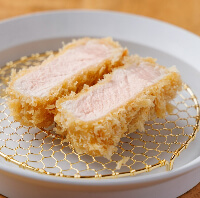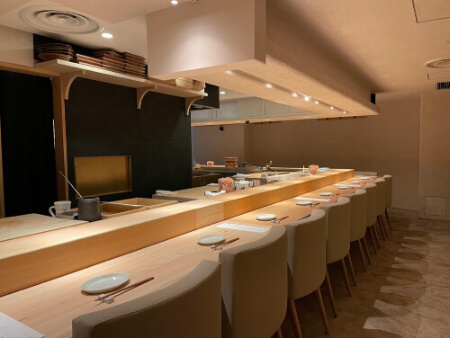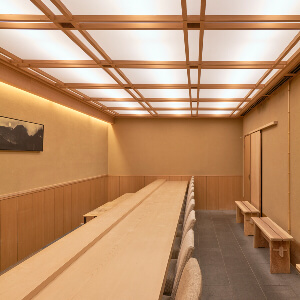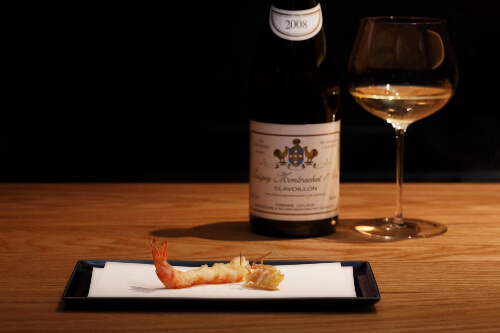Rice
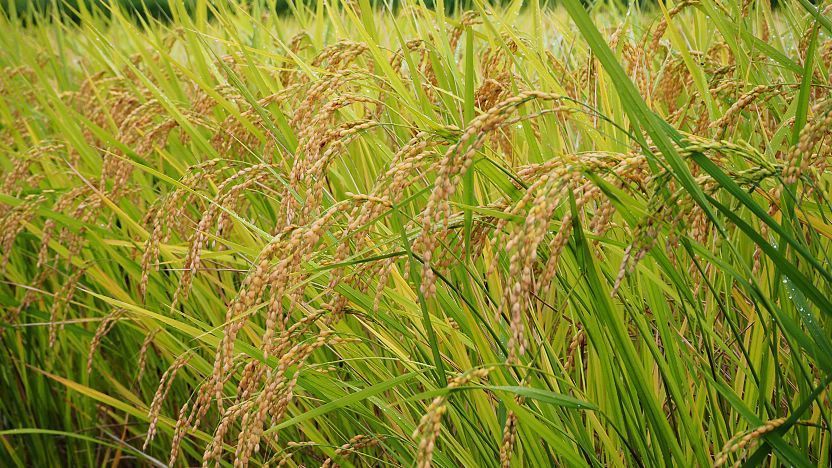
Rice (Ģ─, kome) is Japan's most important crop, and has been cultivated across the country for over 2000 years. It is the primary staple food of the Japanese diet and of such fundamental importance to the Japanese culture that it was once used as currency, and the word for cooked rice (gohan) has become synonymous with the general meaning of "meal".
A bowl of cooked rice is a central part of traditional Japanese meals, but the grain is also processed into several different types of products including alcohol, vinegar and flour. The following are some common rice products and a list of common rice dishes that can be found across the country.
Common types of rice
Common rice products
Common rice dishes
Rice manners
- Pick up your rice bowl with your hand while eating from it.
- It is considered polite to finish every grain of rice that you have been served.
- It is not common to pour soy sauce directly over rice.
- Do not leave your chopsticks standing up vertically in your rice. This is done at funerals.
Rice fields and rice-related attractions
Rice fields are a common sight in the Japanese countryside and an image of nostalgia for many people. The fields start as flooded paddies in the early summer and turn into seas of green and gold waves as the rice grows and matures through the season. The crop of rice is then usually harvested in the fall, although some southern regions may plant more than one crop per year.
Some places famous for particularly nice rice patty landscapes include the Noto Peninsula in Ishikawa Prefecture, Shodoshima Island in Kagawa Prefecture and the Echigo Tsumari region of Niigata Prefecture.
Surrounded by the fertile Shonai Plain, Sakata City in Yamagata Prefecture has been a center of rice trade for centuries. One of the city's tourist sites is a row of historic rice warehouses, one of which has been opened to the public as a local rice museum.

Questions? Ask in our forum.
Restaurants
-
-
![]() Udatsu Sushi (Tokyo)Awarded One Star in 2024 - People from around the world visit to experience Mr. Udatsu's sushi. Inside the restaurant, which resembles an art gallery with its modern decor and numerous artworks, guests can enjoy sushi crafted from the highest quality ingredients. While the foundation is traditional nigiri, the menu also features original creations born from the chef's relentless curiosity and innovation.View on JapanEatinerary
Udatsu Sushi (Tokyo)Awarded One Star in 2024 - People from around the world visit to experience Mr. Udatsu's sushi. Inside the restaurant, which resembles an art gallery with its modern decor and numerous artworks, guests can enjoy sushi crafted from the highest quality ingredients. While the foundation is traditional nigiri, the menu also features original creations born from the chef's relentless curiosity and innovation.View on JapanEatinerary -
![]() Waketokuyama (Tokyo)Awarded One Star in 2025 - With a meticulous focus on allowing guests to enjoy seasonal ingredients at their peak, the menu changes approximately every two weeks. The signature dish, "Grilled Abalone with Seaweed Aroma," features thick slices of abalone generously coated in a rich liver sauce, offering an exquisite taste of the sea.View on JapanEatinerary
Waketokuyama (Tokyo)Awarded One Star in 2025 - With a meticulous focus on allowing guests to enjoy seasonal ingredients at their peak, the menu changes approximately every two weeks. The signature dish, "Grilled Abalone with Seaweed Aroma," features thick slices of abalone generously coated in a rich liver sauce, offering an exquisite taste of the sea.View on JapanEatinerary -
![]() Sushiroku (Osaka)Awarded One Star in 2024 - A cozy, family-run restaurant managed by a husband and wife. They are deeply committed to perfecting their shari (sushi rice) and use two types of vinegared rice tailored to complement each topping. Since 2019, the restaurant has consistently earned stars.View on JapanEatinerary
Sushiroku (Osaka)Awarded One Star in 2024 - A cozy, family-run restaurant managed by a husband and wife. They are deeply committed to perfecting their shari (sushi rice) and use two types of vinegared rice tailored to complement each topping. Since 2019, the restaurant has consistently earned stars.View on JapanEatinerary -
![]() Fry-ya (Tokyo)Exquisite fried dishes crafted by a head chef with experience earning stars in both Switzerland and Japan. The remarkably light tonkatsu is a favorite not only among Japanese diners but also among visitors to Japan. With the theme of "small portions, many varieties," guests can enjoy sampling a wide selection of tonkatsu in smaller portions.View on JapanEatinerary
Fry-ya (Tokyo)Exquisite fried dishes crafted by a head chef with experience earning stars in both Switzerland and Japan. The remarkably light tonkatsu is a favorite not only among Japanese diners but also among visitors to Japan. With the theme of "small portions, many varieties," guests can enjoy sampling a wide selection of tonkatsu in smaller portions.View on JapanEatinerary -
![]() Sushi Hayashi (Kyoto)Awarded One Star in 2024 - A unique sushi restaurant that blends traditional Edomae (Tokyo-style) sushi with Kyoto-style sushi, such as mackerel sushi and steamed sushi, in its courses. The head chef, who trained as a sushi artisan in Switzerland, carefully selects Swiss wines, making them a perfect pairing to enjoy with the meal.View on JapanEatinerary
Sushi Hayashi (Kyoto)Awarded One Star in 2024 - A unique sushi restaurant that blends traditional Edomae (Tokyo-style) sushi with Kyoto-style sushi, such as mackerel sushi and steamed sushi, in its courses. The head chef, who trained as a sushi artisan in Switzerland, carefully selects Swiss wines, making them a perfect pairing to enjoy with the meal.View on JapanEatinerary -
![]() Hikarimono (Tokyo)With a prime location and quality that rivals high-end sushi restaurants, this restaurant maintains the goal of being a place for everyday dining. It offers a casual and relaxed atmosphere, free from stiffness or formality. The signature "Hikari-maki," featuring ingredients such as sardines, pickled plum, and bettarazuke (sweet pickled radish), boasts unique flavors that are especially popular among international visitors.View on JapanEatinerary
Hikarimono (Tokyo)With a prime location and quality that rivals high-end sushi restaurants, this restaurant maintains the goal of being a place for everyday dining. It offers a casual and relaxed atmosphere, free from stiffness or formality. The signature "Hikari-maki," featuring ingredients such as sardines, pickled plum, and bettarazuke (sweet pickled radish), boasts unique flavors that are especially popular among international visitors.View on JapanEatinerary -
![]() Noguchi Tsunagu (Kyoto)Awarded One Star in 2024 - The sister restaurant of the highly exclusive Japanese cuisine establishment, Kyotenjin Noguchi. While maintaining the culinary essence of the main branch, this kappo-style restaurant incorporates ingredients from the chefŌĆÖs hometown in the Goto Islands. Its signature dish, Nikusui, is a masterpiece made from carefully prepared, top-quality A5-grade sirloin.View on JapanEatinerary
Noguchi Tsunagu (Kyoto)Awarded One Star in 2024 - The sister restaurant of the highly exclusive Japanese cuisine establishment, Kyotenjin Noguchi. While maintaining the culinary essence of the main branch, this kappo-style restaurant incorporates ingredients from the chefŌĆÖs hometown in the Goto Islands. Its signature dish, Nikusui, is a masterpiece made from carefully prepared, top-quality A5-grade sirloin.View on JapanEatinerary -
![]() TEMPURA & WINE SHINO (Tokyo)The kind of restaurant that is known only to true gourmets, serving as a sort of 'Hidden gem'. In a chic space with black walls and a ceiling adorned in gold, you can enjoy tempura with a light and elegant texture, delicately fried using refined techniques to achieve a thin, white batter that minimizes the aroma of oil. Savor tempura that maximizes the flavors of the ingredients, paired with Champagne and Burgundy wines carefully selected by the sommelier.View on JapanEatinerary
TEMPURA & WINE SHINO (Tokyo)The kind of restaurant that is known only to true gourmets, serving as a sort of 'Hidden gem'. In a chic space with black walls and a ceiling adorned in gold, you can enjoy tempura with a light and elegant texture, delicately fried using refined techniques to achieve a thin, white batter that minimizes the aroma of oil. Savor tempura that maximizes the flavors of the ingredients, paired with Champagne and Burgundy wines carefully selected by the sommelier.View on JapanEatinerary -
![]() Ginza Nominokoji Yamagishi (Tokyo)Tominokoji Yamagishi, an exclusive kaiseki restaurant from Kyoto, has opened its first location in Tokyo. Unlike its main branch, this establishment adopts an izakaya-style format, allowing diners to enjoy a more relaxed ├Ā la carte dining experience. Despite being located in Tokyo, the restaurant meticulously sources ingredients and even water from Kyoto, dedicating itself to faithfully recreating KyotoŌĆÖs culinary traditions.View on JapanEatinerary
Ginza Nominokoji Yamagishi (Tokyo)Tominokoji Yamagishi, an exclusive kaiseki restaurant from Kyoto, has opened its first location in Tokyo. Unlike its main branch, this establishment adopts an izakaya-style format, allowing diners to enjoy a more relaxed ├Ā la carte dining experience. Despite being located in Tokyo, the restaurant meticulously sources ingredients and even water from Kyoto, dedicating itself to faithfully recreating KyotoŌĆÖs culinary traditions.View on JapanEatinerary -
![]() Kitashinchi Kushikatsu Bon (Osaka)A restaurant that elevates Osaka's soul food, kushikatsu, to a luxurious level. Skilled chefs meticulously prepare each skewer using carefully selected premium ingredients such as Chateaubriand and foie gras. The skewers are fried in a custom copper pot using a unique oil blend based on cottonseed oil, enhancing the natural flavors of the ingredients.View on JapanEatinerary
Kitashinchi Kushikatsu Bon (Osaka)A restaurant that elevates Osaka's soul food, kushikatsu, to a luxurious level. Skilled chefs meticulously prepare each skewer using carefully selected premium ingredients such as Chateaubriand and foie gras. The skewers are fried in a custom copper pot using a unique oil blend based on cottonseed oil, enhancing the natural flavors of the ingredients.View on JapanEatinerary
-

